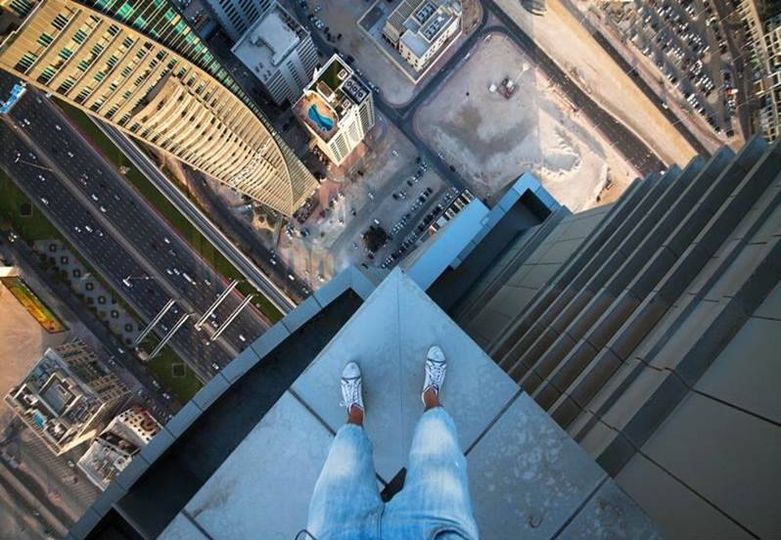The Most Common Types of Phobias
Phobias are a type of anxiety disorder characterized by an irrational and intense fear of certain objects or situations. Phobias can significantly affect individuals’ lives and make daily activities difficult.
Many fears seems reasonable. We all try to avoid things that make us feel uncomfortable. The difference between a fear and a phobia is that a phobia is an intense and irrational fear toward one or more things or situations. Also, with phobias, the level of your fear doesn’t match the actual danger presented by the feared object or situation.
Phobias become a health issue when the fear interferes with your ability to carry out daily activities. Phobias can limit your ability to work efficiently, put a strain on your relationships and reduce your self-esteem.
Here are some of the most common types of phobias:
01. Claustrophobia (Fear of Enclosed Spaces)

Claustrophobia is one of the most common types of phobias. Individuals with this phobia experience intense fear of confined or enclosed spaces such as elevators, tunnels, and small rooms. This condition can lead to feelings of panic and suffocation.
Triggers of claustrophobia
Many different situations or feelings can trigger claustrophobia. Even thinking about certain situations without exposure to them could be a trigger.
What causes claustrophobia?

Claustrophobia is often caused by a traumatic event experienced during early childhood. Claustrophobia can also be triggered by unpleasant experiences or situations, such as turbulence when flying or being stuck in a tube tunnel between stations. A child growing up with a parent who has claustrophobia may develop claustrophobia themselves by associating confined spaces with their parent’s anxiety and feeling helpless to comfort the person they loved.
02. Agoraphobia (fear of being in public places)

People with agoraphobia fear being in public or crowded places. This phobia can include fear of markets, buses, or even leaving the house. It can be highly debilitating and lead to social isolation.
Agoraphobia is a profoundly complicated anxiety disorder. It’s a disorder that is also difficult to explain and is often caused by other anxiety disorders in several ways.
Agoraphobia is often misunderstood, as its definition can change depending on how someone is reacting to the environment around them. It may be defined as:
- Fear of being out in the open or in public.
- Fear of being in an area without an easy escape.
- Fear of being in unfamiliar places.
- Fear of leaving home.
Causes of Agoraphobia

But agoraphobia often has a cause that can show a direct link to the development of the condition, and the most common causes of agoraphobia are other anxiety disorders. These include:
- Panic Disorder
- Post-traumatic Stress Disorder
- Social Phobia
- Other Phobias
03. Arachnophobia (Fear of Spiders)

Arachnophobia is one of the most common phobias, where individuals have an irrational fear of spiders. Merely seeing or thinking about a spider can cause feelings of panic and terror.
Fear of spiders becomes a phobia when it consumes your thoughts, interferes with your daily activities and keeps you from socializing with your family and friends. Symptoms of arachnophobia include sweating or shaking and tightness in your chest or rapid heartbeat. Behavior therapies along with relaxation and breathing exercises are the main treatment options.
What situations can trigger arachnophobia?

Common triggers include:
- Sight of a spider (in person or in pictures).
- Sight of a spider web (in person or in pictures).
- Thoughts/anticipation about spiders or spider webs.
- Speaking about spiders or spider webs.
04. Acrophobia (Fear of Heights)

People with acrophobia fear high places. This phobia can cause dizziness and panic when in high places such as mountains, tall buildings, or bridges.
While some only experience acrophobia around extreme heights, others may feel panic when facing any kind of height.
Acrophobia Triggers
Common triggers include standing on a bridge, climbing a ladder, looking over a cliff, and flying in an airplane.
What Causes Acrophobia?

Like all anxiety disorders and specific phobias, acrophobia is caused by a complex interplay of factors. Scientists don’t know exactly what causes acrophobia in some people and not others. The answer is likely to be a combination of genetic and environmental factors.
05. Entomophobia (Fear of Insects)

Entomophobia is common, where individuals have an irrational fear of insects. This phobia can lead to avoiding places that might contain insects, such as gardens or rural areas.
Entomophobia or its more common equivalent, insectophobia, is the name given to those who fear of insects. This fear can cripple both adult and child alike. While some children grow out of their fear as they mature, others may not, carrying it well into adulthood.

Individuals with entomophobia would experience varying degrees of anxiety when encountering an insect. Symptoms and behaviours include avoiding areas where insects can be encountered, escalated heart rates, fearful feelings, and even immobilisation.
06. Nyctophobia (Fear of the Dark)

Nyctophobia is an extreme and overwhelming fear of the dark and, in many cases, a fear of night-time. It is particularly common in children, with up to 30% of children experiencing a fear of the dark. The majority of these children grow out of this fear before they reach adolescence. However, in some cases, a fear of the dark can extend into adulthood or be so severe that it affects a person’s daily life and their mental and physical health.
Also known as achluophobia, someone with nyctophobia most likely experiences intense fear, anxiety or panic when confronted with darkness or at the thought of being in the dark.
What Causes Nyctophobia?

In addition to the known brain changes that occur in the absence of a light stimulus and increase anxiety, fear of the dark may have a connection to a fear of violence or victimization, people often report stronger feelings of fear when they encounter dark or shadowy spaces. When a person cannot see due to darkness, they commonly begin to imagine or fear threats awaiting them.
Experts believe that darkness also heightens a person’s other senses. When a person cannot see the source of a noise or movement, they are more likely to experience extreme fear when they hear or sense something.
07. Mysophobia (Fear of the Germs)

Individuals with mysophobia have an irrational fear of contamination and germs. This phobia can lead to excessive hand washing and cleaning of objects.
Mysophobia is a distress causing fear related to any microorganism that is known to cause disease. This can be anything along the lines of bacteria, viruses, and parasites.
Causes for Mysophobia
Some people get this because they see someone who has dirt on them. Other people get it because they don’t spend a lot of time with friends and family. Some people might develop these types of thoughts after suffering from another mental disorder. These people might be born more predisposed towards developing anxiety issues later down the road as well.

Some research shows that it is possible that the condition might occur due to genetics. That means if someone in your family has it, you are more likely to have it too.
08. Trypanophobia (Fear of Needles)

Trypanophobia is a severe fear of needles or injections. This phobia can make medical treatments involving injections highly distressing and can lead to avoidance of necessary medical care.
Understandably, most individuals do not enjoy visiting a health practitioner for an annual flu shot or getting a blood test done.
However, there is a subsection of individuals who experience intense fear that is out of proportion to the said source of threat.
People with a phobia of needles tend to fear medical procedures that entail injections or hypodermic needles. Sometimes, this fear extends and becomes associated with medical professionals. This culminates in avoidance of receiving even recommended treatment.
What are the causes of trypanophobia?

According to experts, there is no single cause of trypanophobia. People can be scared of specific features of needles or injections. People can suffer from:
- Hyperalgesia (increased sensitivity to pain.)
- Merinthophobia (a fear of being restrained or tied up and can be triggered when they receive an injection.)
- Negative or stressful memories of the past.
- Fainting or severe dizziness that is caused due to a vasavogal reflex reaction when a needle inserted into their skin














1 Comment